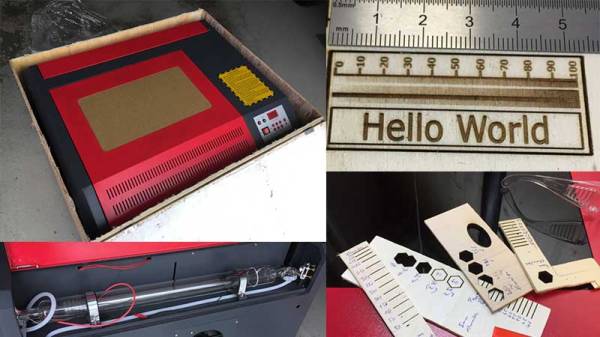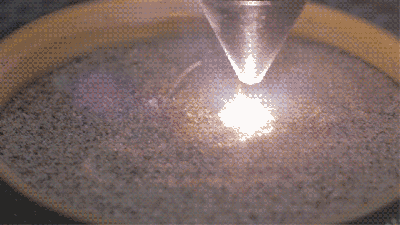The distinctive blue-and-white enclosure of the Chinese-made K40 laser cutter has become a common sight in workshops and hackerspaces, as they represent the cheapest route to a working cutter that can be found. It’s fair to say though that they are not a particularly good or safe machine when shipped, and [Archie Roques] has put together a blog post detailing the modifications to make something better of a stock K40 performed at Norwich Hackspace.
After checking that their K40 worked, and hooking up suitable cooling and ventilation for it, the first task facing the Norwich crew was to install a set of interlocks. (A stock K40 doesn’t shut off the laser when you open the lid!) A switch under the lid saw to that, along with an Arduino Nano clone to aggregate this, a key switch, and an emergency stop button. A new front panel was created to hold this, complete a temperature display and retro ammeter to replace the modern original.
Norwich’s laser cutter has further to go. For example, while we secretly approve of their adjustable bed formed from a pile of beer mats, we concede that their plans to make something more practical have merit. The K40 may not be the best in the world, indeed it’s probable we should be calling it an engraver rather than a cutter, but if that means that a small hackerspace can have a cutter and then make it useful without breaking the bank, it’s good to see how it’s done.
This isn’t the first K40 enhancement we’ve featured. Norwich might like to look at this improved controller, or even extend their cutter’s bed. Meanwhile if [Archie]’s name rings a bell, it might be because of his Raspberry Pi laptop.



















